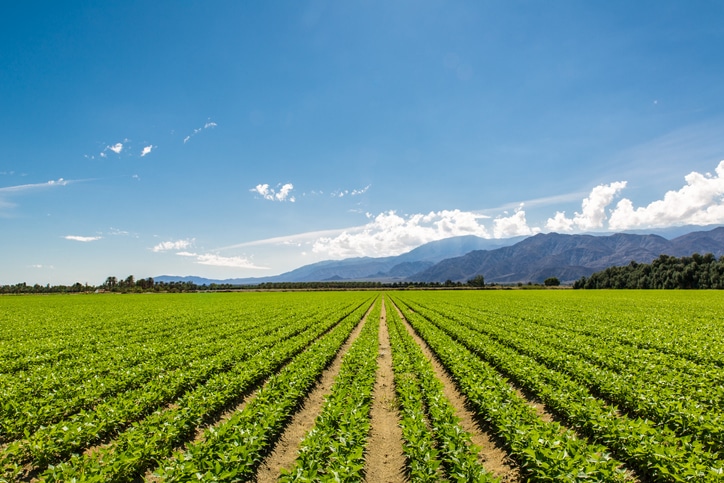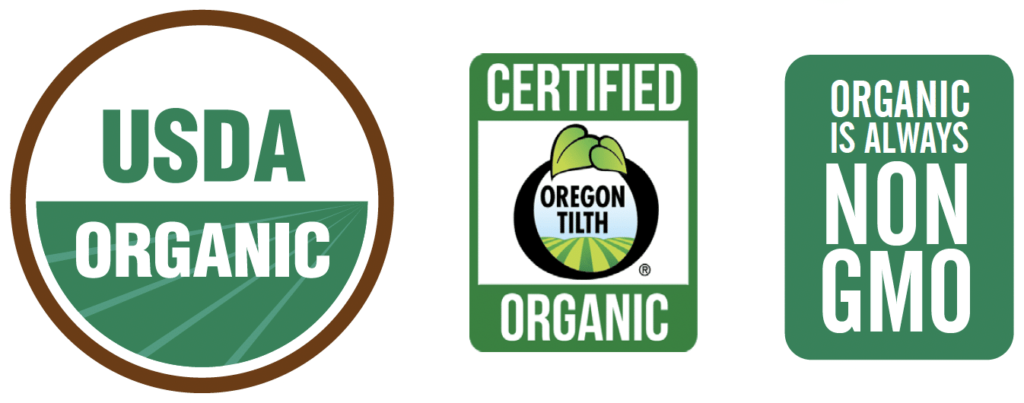
Why Organic Spices and Seasonings?
Why Are Our Spices and Seasonings USDA Organic Certified?
Journey Spice Co. is on a mission to do what we can to improve the planet’s health and give you the healthiest and safest spices and seasonings possible. A USDA Organic Certified business like ours must comply with specific federal guidelines. This involves detailed record-keeping, annual and possible surprise inspections, and tracing of ingredients from farm to final production and beyond to ensure compliance with organic standards. Pest and weed management, the use of additives and preservatives, soil quality of ingredient sources, and many other factors are analyzed when inspections occur[1]. Journey Spice Co. products are certified USDA Organic by Oregon Tilth, a leading organic certification organization committed to making food and agriculture sustainable and socially equitable for over four decades[2].
Are Organic Spices and Seasonings Healthier?
Yes, Organic is Naturally Healthier!
With natural techniques employed over synthetic fertilizers and toxic chemical pesticides, organic is not only better for the environment but also for our own health[3]. Many studies have shown that exposure to pesticides can increase the risk of various cancers, nerve damage, congenital disabilities, and other health problems. Unfortunately, the use of toxic pesticides and the development of even stronger pesticides are only increasing in non-organic production. The reason behind this is because continuously using pesticides on crops leads to increased resistance to the pesticide in current use[4]. Additionally, artificial preservatives, colors, flavors, and other additives in the production of organic products are not allowed[5].
A growing body of research has found that organic crops, including spices and herbs, are often more nutrient-dense than non-organic crops. Eating organic crops may increase our intake of vitamins and antioxidants by as much as 60 percent. Research points to organically grown crops having higher levels of vitamin C, magnesium, and other essential nutrients[6].
Is Organic Really Better for the Environment?
Currently, 25 percent of global greenhouse gas emissions are the result of food production. Organic practices contribute to significantly lower greenhouse gas emissions since natural pest-control, and crop fertilizing techniques are generally used. This is in contrast to synthetic fertilizers and chemical pesticides typically used in non-organic food production, which are extremely damaging to the environment. Organic practices also increase biodiversity by as much as 50 percent and help important pollinators like bees and butterflies thrive. Conservation of water, less water pollution, less soil pollution, and erosion, and increased soil fertility are all associated with organic practices[7].
Organic is Always Non-GMO
There seems to be a lot of confusion regarding non-GMO vs. organic. We have heard people ask questions like:
“Which is better, non-GMO or organic?”
“Is organic the same as non-GMO?”
“Is non-GMO healthier than organic?”
and so on …
The truth is that for food products to be USDA Organic Certified, the use of Genetically Modified Organisms is not allowed[8]. Therefore, organic products are always non-GMO, with many other additional benefits to you and the environment inherent to organic products. On the flip side, a product that just has the non-GMO label is just non-GMO but is not organic. This means that the product does not have many of the benefits of being organic that you are learning about on this page.
Only Natural Sanitation Methods Are Allowed in Organic Production
What is Ethylene Oxide?
Ethylene Oxide (EtO) is a flammable gas and is carcinogenic (having the potential to cause cancer). Exposure to Ethylene Oxide may cause breathing difficulties, convulsions, reproductive effects, neurological symptoms, headaches, nausea, vomiting, and many other issues[9]. It may be difficult to believe, but EtO is also an antimicrobial pesticide used as a popular fumigation technique to sanitize non-organic spices and herbs of bacteria and other microbes before they are ready to be sold. The EPA found that EtO can potentially increase the risk of various cancers. Children are especially vulnerable to possible dangers caused by EtO, with studies showing early exposure leading to an increased likelihood of developing cancer later in life. EtO emissions in the air are apparently such an environmental concern that the EPA is currently working to reduce EtO emissions under the Clean Air Act[10].
Irradiation?
Irradiation is another method often used to sanitize non-organic spices and herbs. Although irradiation likely does not make food radioactive, the biggest concern with this sanitizing method is that it can alter the taste of food, including spices and herbs[11]. Neither of these sanitization methods are allowed in organic spice and herb products. A natural, chemical-free sanitation method that is just as effective at eliminating potential pathogens is employed instead. Spices and herbs undergo a high-pressure steam treatment with a temperature that ranges from 102°C and 122°C for 20-40 seconds. This eliminates potentially harmful pathogens while the taste and other qualities of the spice or herb is preserved[12].
Sewage Sludge
WARNING: The following information will very likely gross you out. Sewage sludge is commonly used as a fertilizer when growing non-organic crops. What is sewage sludge? Basically, it is the solid waste that is separated from liquid waste at wastewater treatment facilities. Everything flushed into a sewer system beyond the obvious (human waste) can be included in sewer sludge, such as medical waste, toxic chemicals, and various types of household waste. Sanitation methods may decrease some risks, but toxic chemicals like PCBs, endocrine (hormone) disruptors, flame retardants, and heavy metals are not filtered out. These toxins are horrible for the environment and human health because they accumulate in the soil, pollute our water from runoff, and are taken up by crops while they grow[13].
Furthermore, toxic chemicals known as PFAS or “forever chemicals” that last thousands of years in our environment are commonly found in sewage sludge. Thus, PFAS continue to be widely distributed across farmlands, where they pollute the environment and lead to harmful consequences for humans and animals, including reproductive harm[14]. Want to avoid consuming foods that have been grown using sewage sludge? We don’t blame you. Thankfully, sewage sludge is strictly prohibited in growing USDA Organic Certified crops, including organic spices and herbs[15].

References:
[1] https://www.usda.gov/media/blog/2012/03/22/organic-101-what-usda-organic-label-means
[2] https://tilth.org/about/
[3] https://esp.tilth.org/focus/health/
[4] https://esp.tilth.org/focus/health/toxins-exposure/
[5] https://www.usda.gov/media/blog/2012/03/22/organic-101-what-usda-organic-label-means
[6] https://esp.tilth.org/focus/health/nutrition/
[7] https://tilth.org/stories/research-highlights-organics-environmental-and-economic-benefits/
[8] https://www.usda.gov/media/blog/2012/03/22/organic-101-what-usda-organic-label-means
[9] https://www.cdc.gov/infectioncontrol/guidelines/disinfection/sterilization/ethylene-oxide.html
[10] https://www.epa.gov/ingredients-used-pesticide-products/ethylene-oxide-eto
[11] https://www.epa.gov/radtown/food-irradiation
[12] https://temaprocess.com/2018/food-safety-for-spices-in-the-spice-industry-steam-treatment-is-preferred100-natural-and-chemical-and-radiation-free/
[13] https://www.centerforfoodsafety.org/issues/1050/sewage-sludge/what-is-sewage-sludge
[15] tilth.org/help-center/prohibited-processes/
Information provided throughout our website, including any linked content, is not intended as professional medical advice and is not a substitute for professional medical expertise or medical treatment.
